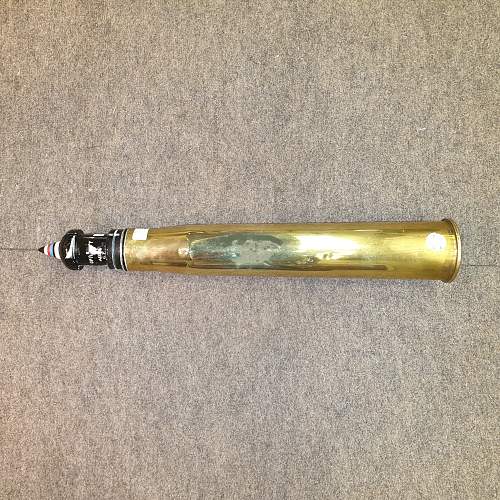The lack of canneleur groove, (Crimping groove to our colonial friends) is because the cart case is crimped into a groove on the driving band, (rotating band in colonial). The ballistic cap, (windshield in colonial) is missing. This is a solid tungsten so in UK would be worth good money as scrap! I have to admit I have not had time to look into it as work and EOD on the ground has been very busy for the last week and obviously takes priority.




 .
.






Bookmarks